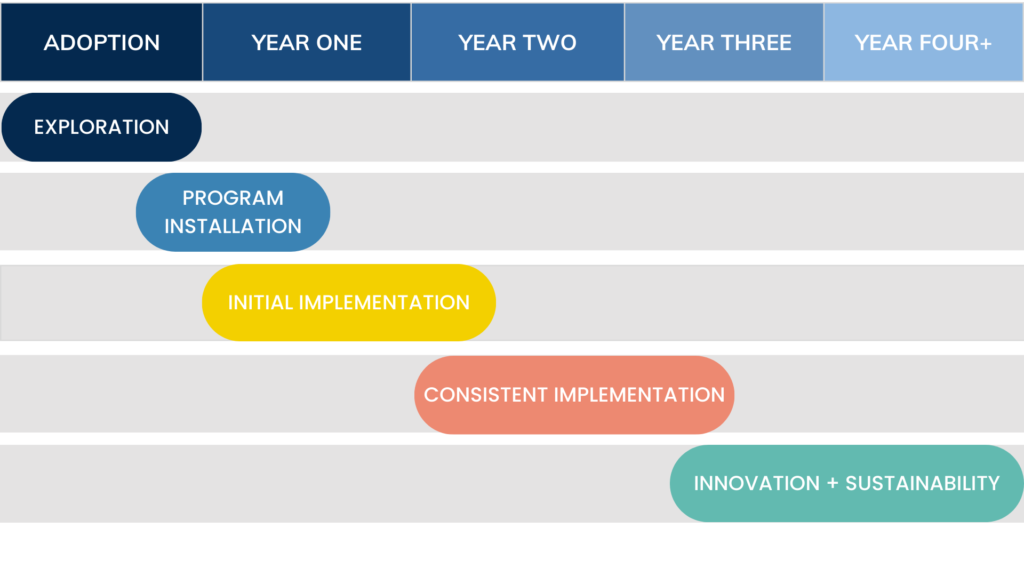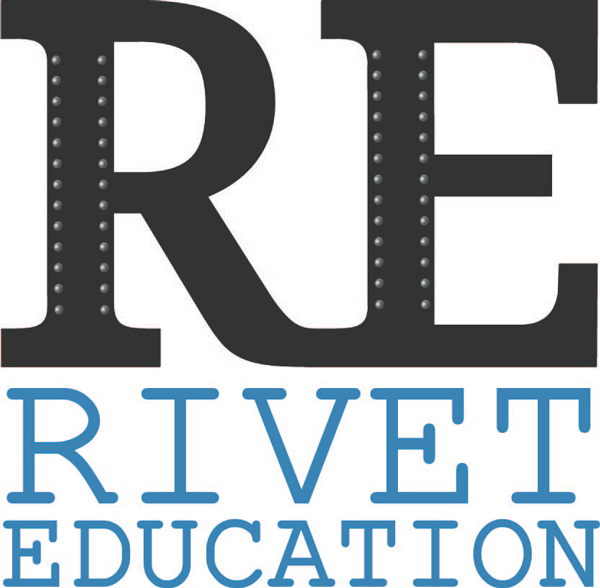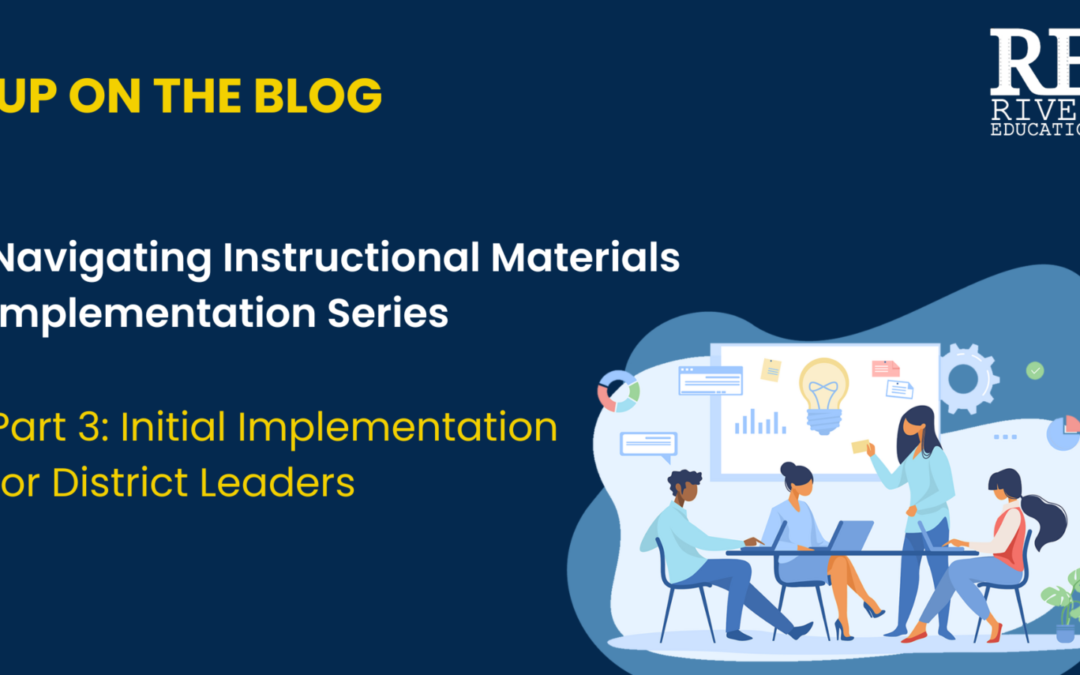This blog post is the fourth in our “Navigating Instructional Materials Implementation” series, exploring the five implementation phases of high-quality instructional materials, also known as HQIM. In each phase, we will explore the steps that each level in the K-12 system (district leaders, school leaders, and teachers) must take to maximize the full benefits of their HQIM. In this post, we will highlight the important steps of the Initial Implementation phase through the lenses of school and district leaders.

While the initial implementation phase can seem simple, as we stressed in our November blog, this is the point in the high-quality instructional materials (HQIM) implementation journey where things can become more difficult. During this crucial but challenging phase, it’s imperative that school and district leaders clearly communicate expectations for how teachers should (and shouldn’t) use their instructional materials and create the systems and structures that support those expectations. Without this, teachers will be understandably frustrated, and they and their students will not reap the full benefit of the strong content and pedagogy that HQIM can provide.
In a recent blog, Emily Freitag, CEO of Instruction Partners, emphasized the important role of school and district leaders in HQIM implementation. “While many leaders we interviewed saw the materials delivery date as the finish line of the selection process, the leaders in the strong implementation examples saw it as the starting line. When leaders engaged deeply in the curriculum, so did teachers.”
In November, we discussed the initial implementation phase from the teacher’s perspective. For teachers to be successful, they must:
- Use the curriculum as intended
- Engage in regular, job-embedded professional learning that builds their knowledge and skill in the context of their curriculum
- Receive regular, curriculum-focused feedback on their practice from school leaders
This blog will examine the critical steps that school and district leaders must take to set teachers up for success. Below is an overview of the key expectations for implementation and the desired actions of education leaders.
| Expectation | Supporting Structure/Protocol |
| Teachers use the curriculum as intended in year one. | Leaders set the expectation that teachers follow their HQIM closely and provide teachers with the necessary training to understand the approach and design of their curriculum to use it as intended in the first year. |
| Teachers regularly participate in collaborative planning focused on internalizing units and lessons from the curriculum. | Leaders establish regular (ideally weekly) time for teachers who teach the same content area and grade level to collaborate with the support of an expert in the curriculum (e.g., an instructional coach or teacher leader). Leaders set the expectation that teachers use the time to internalize and prepare to teach lessons and units from their curriculum, including removing other administrative agenda items off of teachers’ plates during that time. |
| Teachers engage in ongoing training that deepens their knowledge of the curriculum, including its assessments and embedded supports for diverse learners. | District and school leaders hold monthly or quarterly workshops for teachers facilitated by a curriculum expert. This professional learning is curriculum-based and not focused on isolated topics or strategies. |
| Teachers receive regular feedback on their practice from school leaders. | District and school leaders observe classrooms weekly or monthly to answer the following questions: – Are teachers and all students using the HQIM during the lesson? – Are students doing the majority of the work? – Is pacing on schedule according to the curriculum’s guidance? After each observation, teachers are provided with non-evaluative written or verbal feedback within 24 hours. |
Despite these supportive structures, fears and challenges will temper early successes during the initial implementation phase. District and school leaders must establish routines and processes to understand teachers’ and students’ experience with their curriculum- both success and challenges – and adjust their implementation plans accordingly. Specifically, the district and school implementation teams should:
- Establish tools and routines to collect information about teachers’ and students’ experience with the curriculum, including data from classroom visits, student work, curriculum-based assessments, and teacher reflections.
- Collect and organize implementation data to support reflection and decision-making at the school and district levels.
- Identify and prioritize implementation challenges.
- Identify, celebrate, and share “bright spots” to elevate best practices and inform solutions to address key challenges.
Summary
- Prepare for speed bumps and roadblocks. It’s critical that district leaders establish a clear vision and expectations for curriculum implementation that are clearly communicated to school leaders and teachers, providing them with the support needed to execute that vision.
- Have a plan to monitor implementation. To know if your curriculum implementation plan is going well, a plan and system must be in place to observe classrooms and collect feedback from school leaders and teachers. Furthermore, leaders must be willing to change the plan based on the data while not compromising the integrity of the curriculum.
- Provide teachers and leaders with ongoing support. Schools must have structures and processes to provide educators with ongoing support to maximize the full benefit of a new HQIM and provide students with rich learning experiences. This support takes many forms, including weekly collaborative planning and coaching support throughout the year. In addition, teachers and leaders need to engage in monthly or quarterly workshops to build their knowledge of the curriculum and its’ embedded supports.
- Celebrate and share successes. In the first year of implementation, frustration with the curriculum or stories of it not working may bubble up in staff meetings, school board meetings, and other spaces. To counteract teachers’ fears and frustrations in the initial implementation phase, leaders must create a process that identifies bright spots that can be shared across the district as areas of implementation succeed. Teachers excelling in using the curriculum with integrity can serve as an example for those who need additional support or are hesitant to buy into the new HQIM.
Even with these helpful tips, implementing a new curriculum can seem overwhelming. Here are additional ways to build your knowledge of the initial implementation phase:
- Take our free professional learning diagnostic to identify areas in which your professional learning plan and system can be improved to best meet the needs of your teachers.
- Watch our November Professional Learning Power Hour featuring Amplify and Cumberland Valley Public Schools as they share their secret ingredients for initial implementation.
- Visit the Professional Learning Partner Guide to view our list of certified providers who can provide ongoing support to teachers and leaders to ensure the successful implementation of your new curriculum.
Stay tuned to our News & Events page for our upcoming blogs and PL Power Hours in 2024, where we will explore the final two phases of the HQIM implementation journey.

